What is tidal power? Definition and examples
Tidal Power is a type of hydropower that converts the energy in moving tidal waters into electricity. Although tidal power represents a small percentage of total global power generation, this could change significantly in years to come.
We can also use the term ‘Tidal Energy‘ with the same meaning as tidal power.
Tidal power is a form of hydropower or hydro power. Hydropower or hydro energy involves capturing energy from falling or flowing water. We then convert that energy into electricity. We call that electricity hydroelectricity.
Unlike solar power and wind power, with tidal power we can predict when to capture the energy. In other words, we know when the tides come and go. On the other hand, we cannot predict when the (cloudless) sun comes out or when the wind blows.
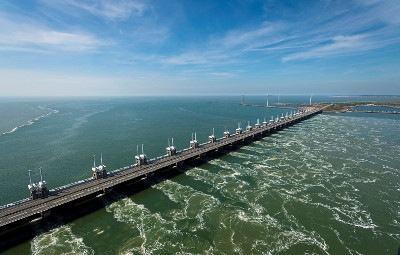
Tidal power – obstacles
Among sources of renewable energy, tidal energy has historically suffered from relatively high costs. Also, compared to other renewable sources, there is more limited availability of sites. Specifically, sites with sufficiently high flow velocities or tidal ranges. Tidal range refers to the distance the sea moves from low to high tide.
Recent technological advancements, however, both in design and turbine technology, have turned tidal power’s prospects significantly. Today, the number of available sites has increased significantly compared to the 20th century.
Four ways to get tidal power
Today, there are four ways to get tidal power: tidal lagoons, tidal barrages, dynamic tidal power, and tidal stream generators.
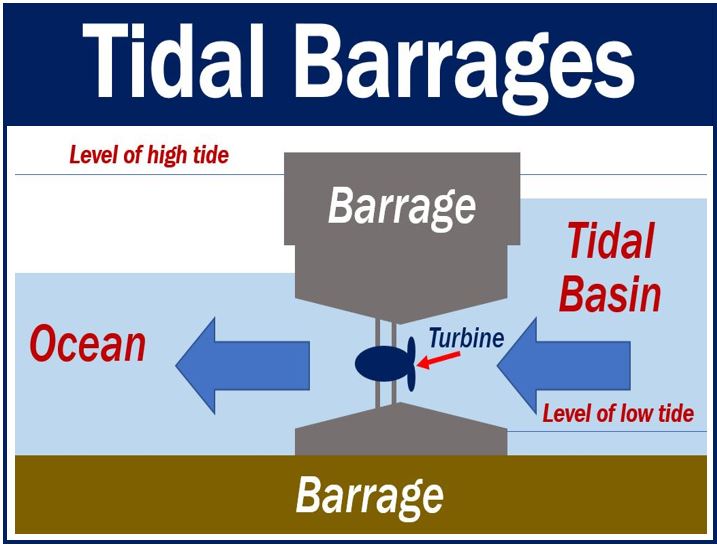
Tidal barrages
Generating electricity with a tidal barrage involves building a fairly low dam wall. We call that wall a ‘barrage.’ The wall goes across a tidal inlet or basin and subsequently creates a tidal reservoir.
The dam has several underwater tunnels cut into its width. This allows seawater to flow through the tunnels in a controllable way. Engineers control the flow using ‘sluice gates.’
There are huge water turbine generators in the tunnels. As the water rushes past the generators, they spin. The spinning, like the dynamo on your bicycle, generates electricity. In this case, however, it is tidal electricity or tidal power.
Alternative Energy Tutorials says the following about tidal barrages:
“Tidal barrages generate electricity using the difference in the vertical height between the incoming high tides and the outgoing low tides.”
“As the tide ebbs and flows, seawater is allowed to flow in or out of the reservoir through a one-way underwater tunnel system.”
“This flow of tidal water back and forth causes the water turbine generators located within the tunnels to rotate producing tidal energy with special generators used to produce electricity on both the incoming and the outgoing tides.”
Tidal stream generators
Tidal stream generators are usually less damaging to the environment than barrages because the turbines are under water.
Land constrictions such as inlets or straits can create high velocities at specific sites. If we place the turbines strategically, we can capture that energy and convert it into electricity.
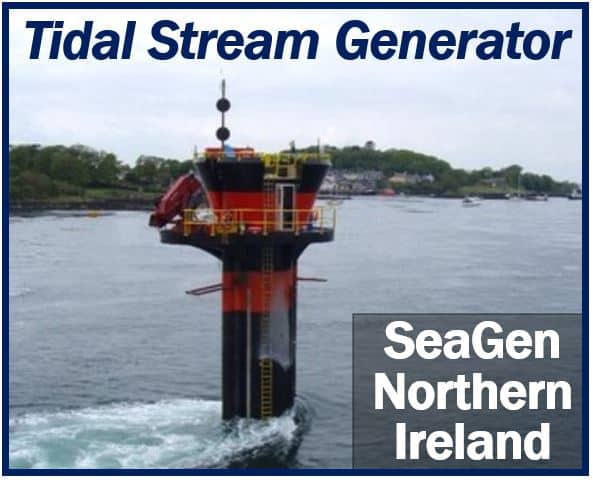
Tidal stream turbines can be vertical, horizontal, ducted, or open.
According to Wikipedia:
“Stream energy can be used at a much higher rate than wind turbines due to water being more dense than air. Using similar technology to wind turbines converting energy in tidal energy is much more efficient.”
“Close to 10 mph (about 8.6 knots in nautical terms) ocean tidal current would have an energy output equal to or greater than a 90 mph wind speed for the same size of turbine system.”
Tidal stream turbines look very much like wind turbines. Basically, they do the same thing. Wind turbines turn when air blows through them. Tidal stream turbines, on the other hand, turn when water flows through them.
Many tidal stream generation areas on the seabed look just like wind farms. The difference is, of course, that one is on land while the other is under water.
Dynamic tidal power
This type of power generation uses the difference between the kinetic and potential energy of tides.
Very long dams are built from the coast directly out into the sea. Engineers position them, therefore, so that the water flow is parallel to the coast.
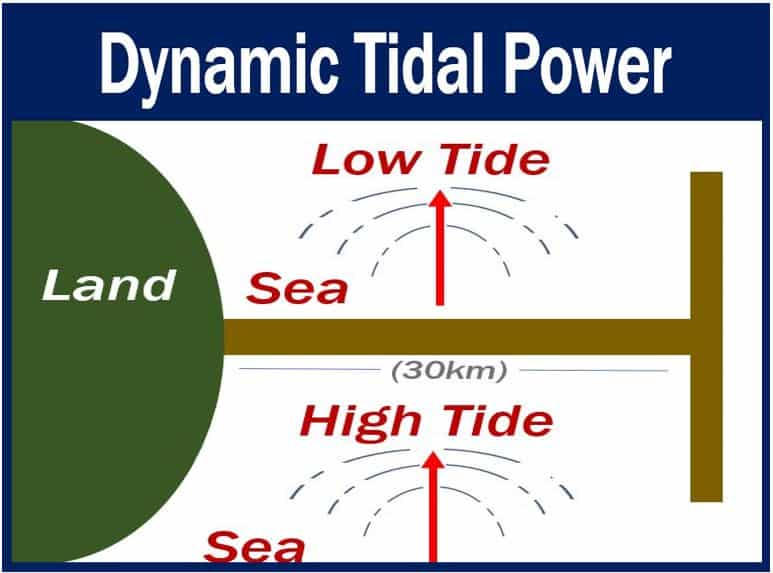
During the tides, water on one side of the dam is lower/higher than the other side. As this seawater flows through the dam, it turns several turbines within the dam. The turbines subsequently generate electricity.
Most turbines can flip 180o so that they can generate electricity when the tide comes in from the opposite direction.
Energy Education says the following regarding dynamic tidal power:
“A dynamic tidal power dam can run from 30 to 60 km long and is typically built perpendicular to the coast, running relatively straight out into the ocean. This design does not enclose any area – and thus allows more freedom for aquatic life without risk of being trapped.”
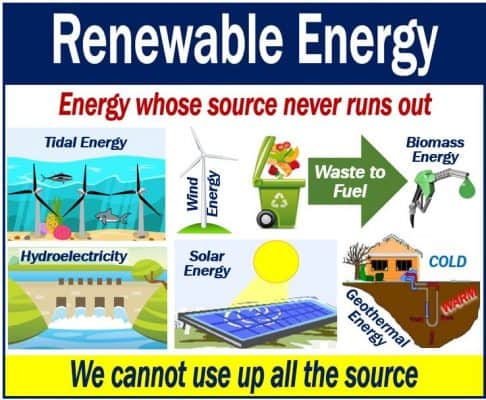
Tidal power is renewable energy
Renewable energy is energy whose source never runs out – it is everlasting. In other words, we cannot use it all up – there is always more. In a human timescale, it never ends.
Wind power, biomass, and solar power are types of renewable energy. The energy from wind, i.e., moving air, which is the source of wind power, is always there or always comes back. I know it will be windy in the future.
The Sun’s energy, i.e., the source of solar power, is also always there.
Geothermal energy uses the Earth’s inner heat to warm houses or generate electricity. That inner heat will never disappear (in a human timescale).
2 Videos
This two educational videos, from our YouTube partner channel – Marketing Business Network, explain what ‘Tidal Power’ and ‘Renewable Energy’ are using simple and easy-to-understand language and examples.
-
Video 1 – What is Tidal Power?
-
Video 2 – What is Renewable Energy?

